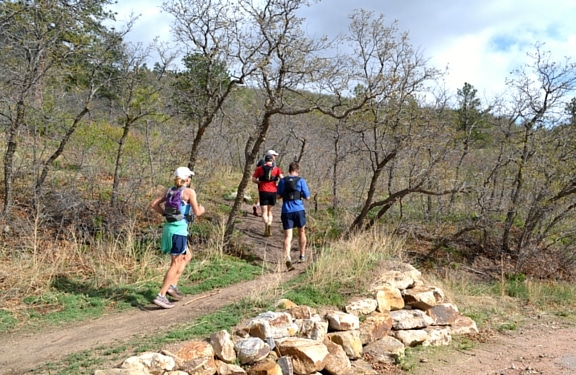
8 Training Fundamentals Every Ultrarunner Needs to Focus On
Book excerpt from Jason Koop’s Training Essentials for Ultrarunning
In order to keep focus on your fitness, it is important that training be oriented toward the fundamentals. Athletes and coaches are quick to add extraneous stuff to training programs. They want to try the latest equipment, experiment with the newest diet, or start sleeping in an altitude tent before actually focusing on nailing down the basics of training. But it’s a fool’s errand to chasing marginal gains on the fringes while neglecting the fundamental and known principles for improving endurance performance. Don’t misunderstand me: I am a proponent of innovation in training, gear, and nutrition. I use advanced protocols for altitude training and heat acclimatization. But innovations should enhance sound training, not attempt to circumvent it.
To arrive at the starting line completely prepared for an event, you must maintain a tight focus on eight fundamental areas. When I coach an athlete, all decisions about training, nutrition, racing, and equipment are filtered through this list of eight. Simply put, if an activity doesn’t address and enhance your performance in at least one of these fundamental areas, it isn’t going to make you a faster, stronger, or better runner.
1. Develop the Cardiovascular Engine
The more oxygen you can take in, deliver, and process in working muscles, the better. The workouts necessary for this are not complicated or particularly sexy. Some could even be called boring, yet I don’t apologize for that. Gimmicks sell but fade out; sound training principles will never let you down.
[blog_promo promo_categories=”coaching” ids=”” /]2. Improve Lactate Threshold Climbing Speed
You spend a lot more time going uphill than downhill, and that’s where you can most dramatically improve your pace and your race-day performance. Lactate threshold is also one of the most trainable aspects of performance, which means that lactate threshold work yields the greatest improvements for the amount of effort you put toward it in training.
3. Concentrate Your Workload
Training stimulus has to be sufficient to cause an adaptation, and as athletes get more fit, a bigger and more concentrated stimulus is needed. In practical terms, this means creating training blocks and maintaining focus on one area of training long enough to squeeze as much adaptation from it as possible.
4. Train the Gut
The best cardiovascular engine in the world won’t help you if you overheat, fall short on calories, run out of fluids, or suffer from gastric distress. How, what, when, and how much you eat and drink can all be trained so you can supply your body with the fuel and fluid it needs.
[blog_promo promo_categories=”camp” ids=”” /]5. Do the Most Specific Things Last
Each event has its unique nuances, and preparing for them is important. The most effective way to do that is to start with the broadest aspects of training (aerobic endurance, time on your feet, etc.) and gradually work your way to the most specific aspects, such as event-specific intensity, environmental adaptations, and terrain and grade specificity, closer to your event.
6. Race With a Purpose
Ultramarathons are too hard, long and difficult to race on a whim. When the going gets tough—and it will—it is purpose that will help drive you forward. Why are you doing this? It does not have to be a world-changing purpose. In my experience, athletes with deeply personal reasons for racing are able to better leverage their purpose than those with grander but perhaps less personal reasons.
7. Rest With Purpose and Intensity
It is all too easy to run yourself into the ground. Have confidence that past a certain point, the amount of running you can do does not correlate with an increased chance of finishing an ultramarathon or improving your finishing time. Training is a balance of stress and recovery. Recovery is a part of training, not the absence of it.
► Free Cycling Training Assessment Quiz
Take our free 2-minute quiz to discover how effective your training is and get recommendations for how you can improve.
8. Comprehensively Prepare for All the Stresses You Will Face on Race Day
To paraphrase Scottish poet Robert Burns, “The best-laid plans of mice and men often go awry, and leave us with nothing but grief and pain.” Some race day stresses are easily visualized and anticipated, like the chill of the night or the distance between aid stations. Others will present themselves at inopportune times and in the worst places imaginable. Such is the nature of the sport. Everyone faces tough moments in ultramarathons, and you have to be prepared to deal with those you can predict and ready to think your way through the ones you didn’t see coming.
For a limited time, you can get a free copy of Koop’s Training Essentials for Ultrarunning when you sign up for a CTS Coaching Package.
View Ultrarunning Coaching Offer
[blog_promo promo_categories=”charity” ids=”” /]
► FREE Mini-Course: Learn How to Maximize Your Limited Training Time
Learn step-by-step how to overcome limited training time and get faster. Walk away with a personalized plan to increase your performance.
"*" indicates required fields

